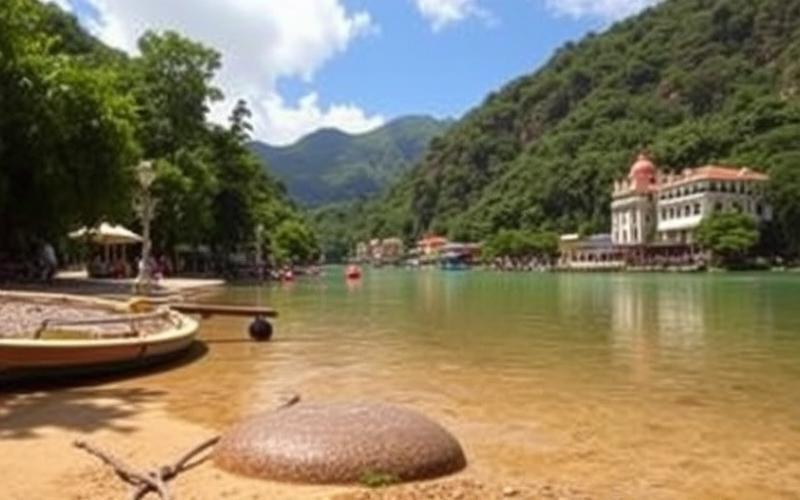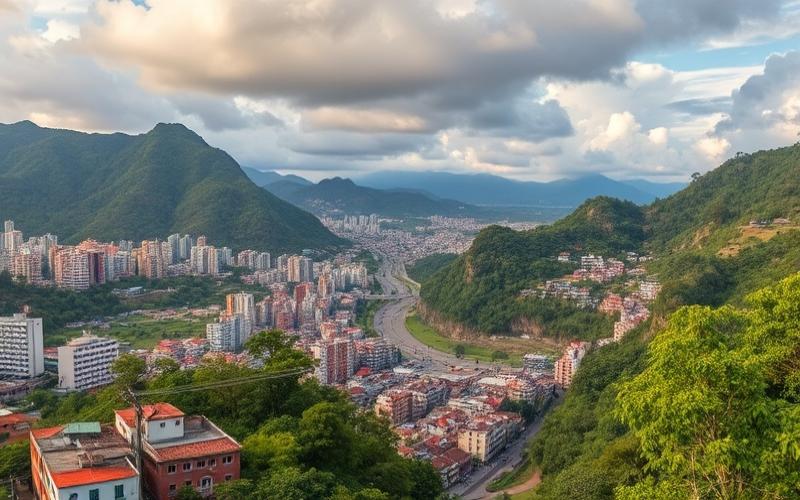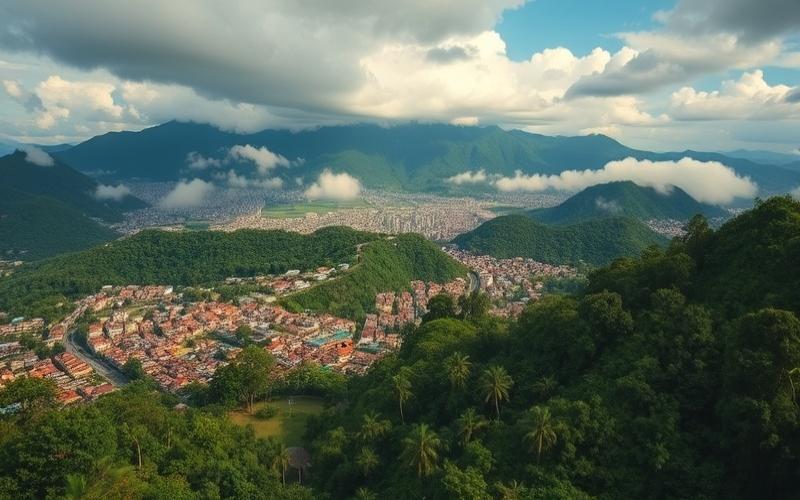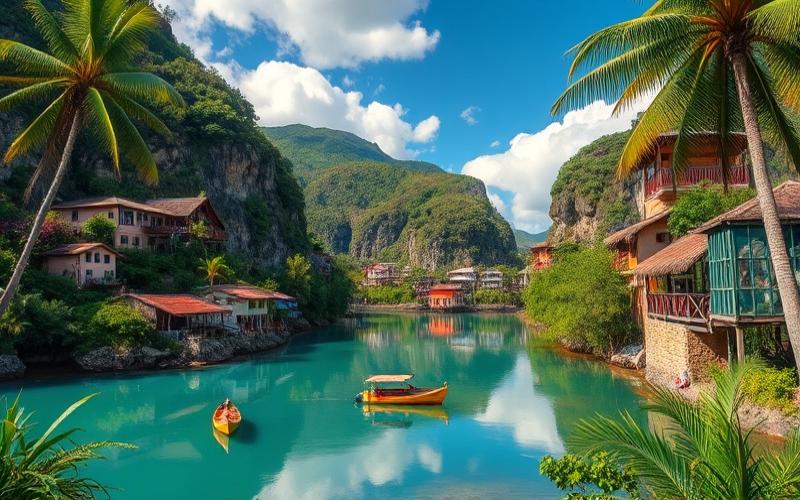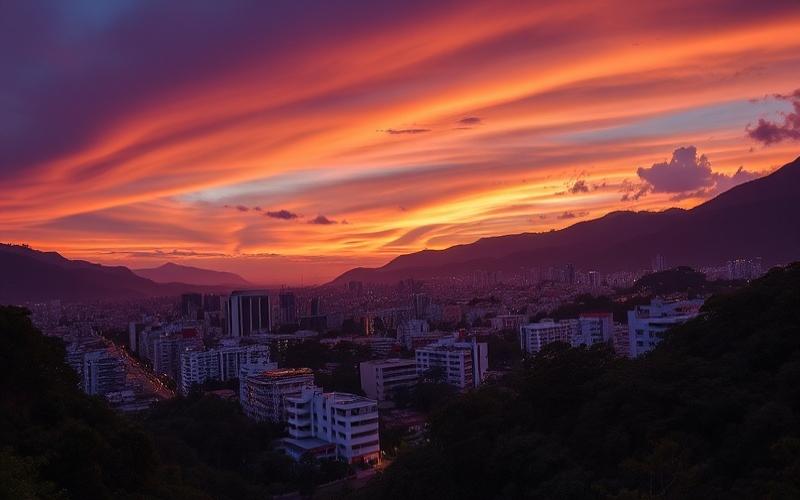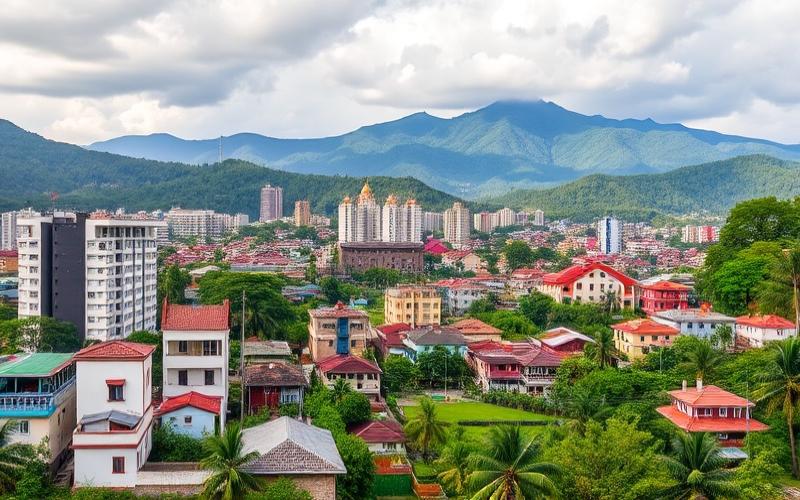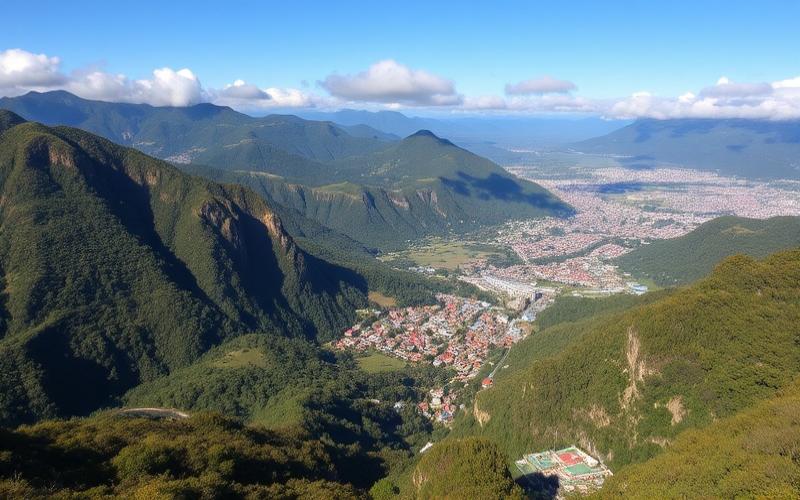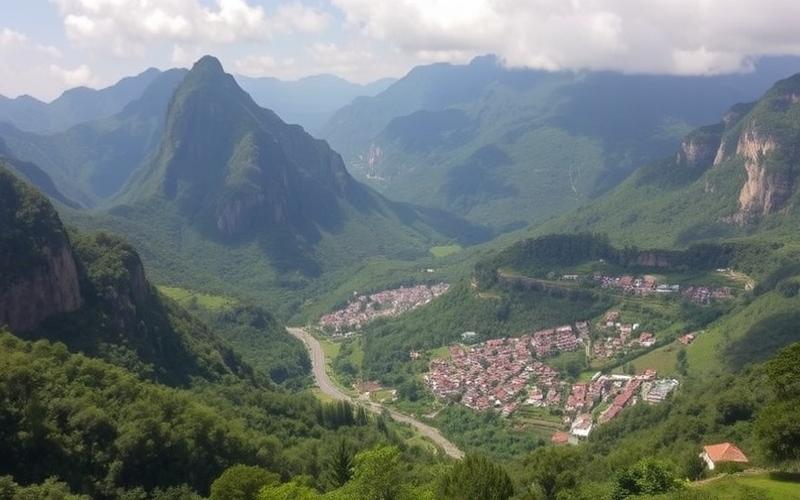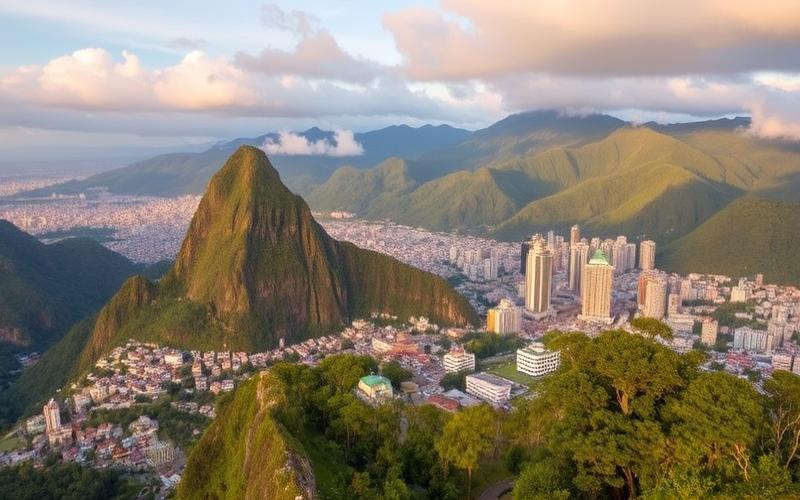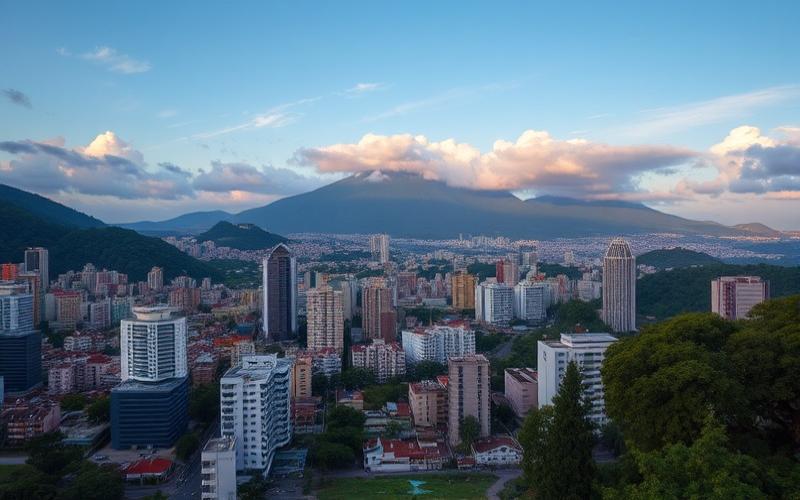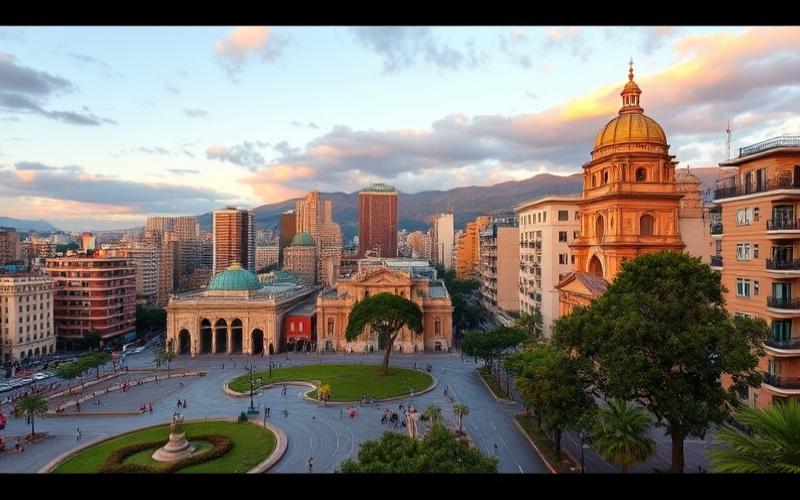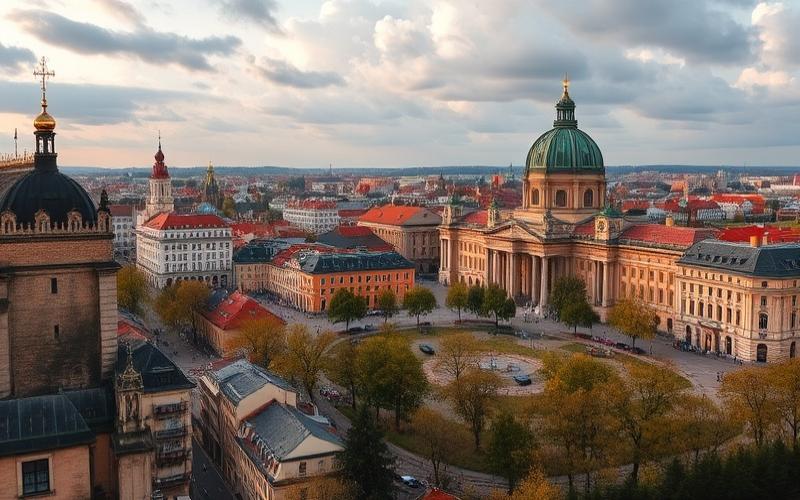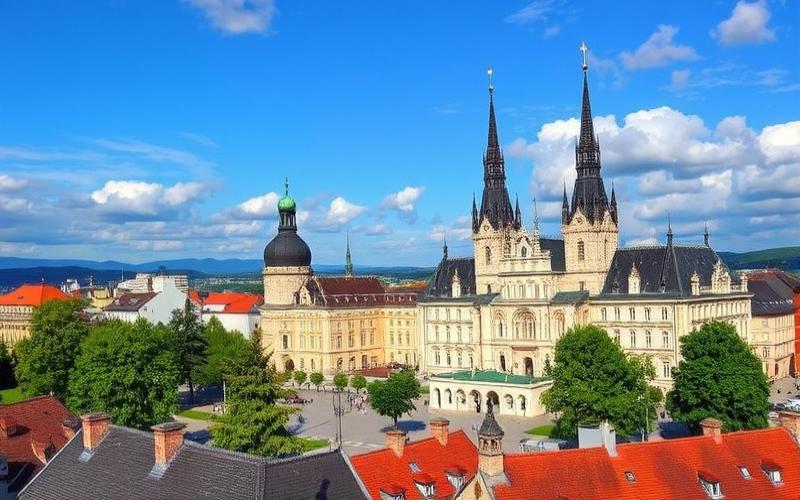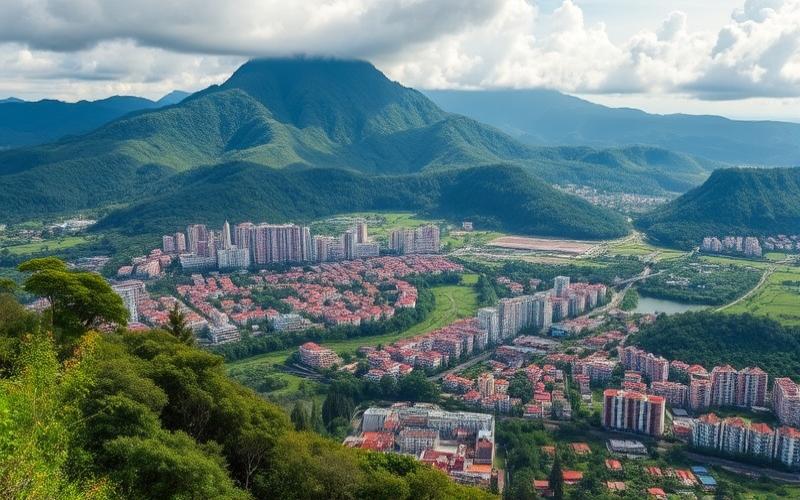
 Published on and written by Cyril Jarnias
Published on and written by Cyril Jarnias
Settling in Colombia, a country of vibrant colors and human warmth, requires much more than simply choosing your new home; understanding local religious practices becomes essential for harmonious integration into society.
Indeed, Colombia, largely influenced by Catholicism while hosting a mosaic of lesser-known beliefs, offers a fascinating landscape for expatriates curious about understanding the spiritual customs of local communities.
From the exuberant celebration of Semana Santa to the more discreet rituals of indigenous worship, each religious practice reveals a unique dimension of Colombian identity.
This guide is designed to lead expatriates through this rich cultural panorama, offering keys to navigating traditions while respecting and celebrating the religious diversity that permeates this vibrant country.
Impact of Religious Practices on Daily Life in Colombia
Religious practices in Colombia deeply permeate daily life, structuring the calendar, social relationships, cuisine, and community organization. Here is a detailed analysis of their impact, illustrated with concrete examples and advice for expatriates wishing to integrate.
Religious Holidays and Time Organization
Colombia has a high number of public holidays, many of which are linked to Catholic feasts: Christmas, Easter (Holy Week), Assumption, All Saints’ Day, and the Feast of the Sacred Heart (national holiday). These celebrations mark the year and strongly influence the work calendar. Companies adjust their schedules around these dates; it is common for activities to slow down or stop completely during Holy Week or at Christmas. Schools also follow this rhythm, incorporating these breaks into their academic schedules.
| Religious Holiday | Impact on Work/School | Example of Local Activity |
|---|---|---|
| Holy Week | Widespread shutdown | Street processions, biblical reenactments |
| Christmas | Extended holidays | Night markets (alumbrados), live nativity scenes |
| Feast of the Sacred Heart | National holiday | Solemn masses and parades |
Religious Rituals and Social/Family Interactions
The Colombian family is traditionally very close-knit; it constitutes the country’s “social cement.” Religious practices reinforce this cohesion: baptisms, first communions, weddings, and funerals are all occasions for gathering. Sunday mass remains an important appointment for many practicing families.
In some rural areas or within indigenous communities converted to Christianity but having retained their ancestral traditions in syncretism with Catholicism, family breakdowns are sometimes observed when certain members adopt a different faith. A poignant testimony tells how an indigenous Christian was excluded by his family after his conversion: “I am not close to my brother or my sister… Because you preach the Gospel… you also lose the right to work in the community.” This phenomenon shows how closely religion and social identity are linked.
Influence on Culinary Traditions
Religious holidays give rise to specific culinary specialties:
- Christmas: buñuelos (savory fritters) and natilla (creamy custard)
- Holy Week: typical meatless dishes like cazuela marinera (seafood soup)
- All Saints’ Day: panela y queso (sweet bread with cheese)
These dishes become essential during family celebrations around a generously set table.
Places of Worship in Local Life
Churches – often historical – occupy a central place in Colombian cities and villages. They serve not only to celebrate mass but also to organize social or charitable events: soup kitchens for the needy, educational workshops for underprivileged children… In some difficult neighborhoods controlled by illegal armed groups, they can also play a discerning role in social and even political matters.
Some places even become emblematic, like Monserrate in Bogotá, where faithful and tourists flock every year during major liturgical occasions.
Good to Know:
In Colombia, some religious holidays like Holy Week result in public holidays, thus influencing the work calendar; during these celebrations, Catholic rituals predominate but coexist with indigenous practices, impacting culinary traditions and strengthening social bonds within communities. Expatriates are advised to show respect during gatherings around places of worship, which play a central role in local community life.
Understanding Major Religious Holidays and Their Meanings
Colombia has 18 official public holidays, at least 12 of which have a purely religious origin linked to the Catholic liturgical calendar. Catholicism, the country’s predominant religion, has profoundly shaped Colombian cultural and spiritual identity since colonial times. This influence manifests through a dense festive calendar where religious celebrations mark daily life, offering privileged moments for spiritual reflection, family reunions, and spectacular cultural displays.
Semana Santa: The Pinnacle of Colombian Devotion
Holy Week constitutes the most sacred period of the Colombian religious calendar, commemorating the passion, death, and resurrection of Jesus Christ. This celebration notably includes Holy Thursday and Good Friday, official holidays during which public and private sectors suspend their activities.
Popayán stands out as the epicenter of Holy Week celebrations in Colombia. Majestic processions traverse the city streets on a 2-kilometer route, staging passages from the gospels through magnificent scenes carried on large wooden platforms called pasos. The men honored with carrying these structures are called cargueros and wear white or blue hooded tunics, preceded by women carrying incense. The flowers adorning these processions have specific colors and meanings, while sacred music concerts resonate in churches, perpetuating traditions dating back to the Middle Ages.
Mompox, located on an island in the Magdalena River, is another major site for Holy Week. The celebrations date back to the time when wealthy villagers made lavish donations to the church – jewelry, altars – to obtain divine forgiveness. The town’s seven churches actively participate in organizing the procession of the Friday of Sorrows and the Desprendimiento or Paso Robadon, a particularly beautiful procession that has gained international renown. Holy Week in Mompox officially begins on Good Friday at midnight, when the crowd of faithful knocks on the doors of the San Francisco church.
The Cycle of Marian and Christological Feasts
Celebrations dedicated to the Virgin Mary occupy a central place in the Colombian religious calendar. The Solemnity of Mary, Mother of God, celebrated on January 1st, coincides with the start of the civil year. The Assumption of the Virgin Mary, fixed on August 15th and then moved to the corresponding Monday according to the Emiliani Law, and the Immaculate Conception on December 8th, widely celebrated throughout the country especially with candles and processions, testify to the deeply rooted Marian devotion in Colombian popular culture.
Among the movable Christological feasts, the Ascension of the Lord commemorates Jesus’ ascension to heaven, while Corpus Christi honors the real presence of Christ in the Eucharist. The feast of the Sacred Heart of Jesus highlights the divine love of Christ for humanity. These dates vary annually because they depend on the Easter calendar, itself determined by astronomical calculations related to lunar cycles.
Other fixed-date celebrations include Saint Joseph on March 19th, patron of the home, generally moved to the following Monday, as well as the feast of Saints Peter and Paul on June 29th and All Saints’ Day on November 1st.
Christmas and the Colombian Advent Season
Christmas, celebrated on December 25th, probably represents the most popular Christian holiday worldwide and holds particular importance in Colombia. The festivities officially begin with El Día de las Velitas (the Day of the Little Candles), celebrated on December 7th, which marks the start of the Colombian Advent period. This unique tradition involves illuminating streets, windows, and balconies with thousands of candles and lanterns, creating a magical atmosphere throughout the country.
This period extends until December 25th, marked by novenas (nine days of prayers), midnight masses (misa de gallo), elaborate nativity scenes, and family gatherings where traditional dishes are shared. The family and community dimension of Christmas transcends social classes, uniting Colombians in an atmosphere of joy and sharing.
Syncretisms and Multicultural Influences
Although Catholicism dominates, Colombian religious traditions incorporate elements from indigenous and Afro-Colombian cultures, creating unique syncretic manifestations. The Carnival of Blacks and Whites in Pasto, inscribed on UNESCO’s Intangible Cultural Heritage of Humanity in 2009, illustrates this cultural blending. Celebrated from January 2nd to 7th, its origins date back to 1546 and it became popular in 1607, when Spain granted January 5th to the black population to relax and have fun.
On January 5th, Day of the Blacks, participants paint their faces black while shouting « que vivan los negros! », celebrating African heritage. The next day, Day of the Whites, features the festival’s largest parade, stretching over 7 kilometers. This celebration transcends racial and social distinctions, symbolizing unity in diversity.
The Carnival of Barranquilla, Colombia’s most famous celebration, honors the cultures of the city’s inhabitants, the Colombian Caribbean, and the Río Grande de La Magdalena. The festivities begin on the Saturday before Ash Wednesday and end on Mardi Gras, blending European influences (Spanish and Portuguese) and local traditions in an explosion of colors, dances, and songs symbolizing renewal and change.
Regional Specificities and Local Traditions
The observance of religious holidays varies considerably between urban and rural areas. In large cities like Bogotá, Medellín, or Cali, celebrations often adopt a more institutional character, with masses in cathedrals and events organized by ecclesiastical authorities. Shopping malls and residential areas are particularly illuminated during the Christmas period.
In rural areas and small towns, traditions retain a more authentic and participatory character. Communities mobilize collectively to prepare processions, decorate churches, and organize festivities. Ancestral rituals are passed down from generation to generation, preserving customs sometimes lost in urban centers.
Tunja and Santa Fe de Antioquia are renowned for their solemn processions and traditional celebrations, attracting national and international tourists. This religious and cultural tourism generates significant revenue for hospitality, restaurants, transportation, and commerce, becoming a temporary but significant economic driver.
Impact on Daily Life and Practical Recommendations
Religious holidays suspend activities in the public and private sectors, except for exceptions provided by law. Banks, administrations, schools, and many businesses close during these public holidays. The Emiliani Law, specific to Colombia, moves some religious holidays to the Monday following their liturgical date, creating “bridges” (extended weekends) conducive to family travel.
| Period | Festivities | Practical Impact |
|---|---|---|
| Early December | Día de las Velitas (Dec 7) | Start of festive season, illuminations |
| Late December | Christmas (Dec 25) | Widespread closures, family gatherings |
| March/April (variable) | Holy Week | National holiday week, intense religious tourism |
| Variable dates | Movable feasts (Corpus Christi, etc.) | Holidays moved to Monday |
For expatriates wishing to participate or respectfully observe these celebrations, several recommendations apply. Plan ahead for travel and professional activities by consulting the official calendar of public holidays, as many services are interrupted. Respect sacred spaces by adopting appropriate attire when visiting churches and processions (avoid shorts, tank tops, and caps). Participate discreetly in processions by staying in the background if you are not a practicing Catholic, while showing respect for the observed rituals.
Inquire locally about the specific traditions of each region to enrich the cultural experience and avoid awkwardness. Colombians generally appreciate foreigners’ respectful curiosity towards their religious traditions. Anticipate tourist crowds during Holy Week in cities like Popayán or Mompox requires booking accommodation and transportation several weeks in advance.
Colombian religious celebrations offer much more than simple liturgical observation: they constitute privileged windows into the soul of a people where spirituality, history, and joy of living combine to create moments of unique emotional and cultural intensity.
Good to Know:
Catholicism shapes most Colombian holidays, with celebrations like Holy Week and Christmas widely influencing daily life, while Afro-Colombian and indigenous influences enrich these traditions with unique rituals; for expatriates, it is advisable to respect local customs and inquire about public holidays to plan effectively.
Behavioral Codes and Adaptations for Expatriates
Colombia is characterized by a religious landscape dominated by Catholicism, although spiritual diversity has increased considerably in recent decades. Catholicism gathers 57.2% of followers, followed by Evangelical and Pentecostal churches with 19.5% of believers. This historical predominance of Catholicism deeply permeates Colombian culture since the colonial period and still shapes many aspects of daily and professional life today.
The 1991 Constitution guarantees freedom of worship and the absence of discrimination based on religious practice, thus allowing the harmonious coexistence of various faiths. Beyond Catholicism and Protestantism, there are Muslim, Jewish, Hindu communities, as well as Afro-Colombian religious practices and indigenous beliefs. Agnostics and atheists represent about 6.3% of the population, reflecting a growing trend towards secularization, particularly among younger generations.
Religious Influence on Social Behaviors
The omnipresence of the Catholic Church manifests in daily interactions and social values. Religious expressions naturally punctuate conversations: “Si Dios quiere” (God willing), “Gracias a Dios” (thank God), or “Que Dios te bendiga” (God bless you) are commonly used, even in professional contexts. This ambient religiosity influences behavioral norms, valuing family, respect for elders, community solidarity, and a certain modesty in public spaces.
Daily religious practices to which expatriates are exposed include blessings before meals, family prayers, and attendance at Sunday services. In some professional environments, it is not uncommon to see religious images in offices or to attend collective prayers before important meetings. Colombians may also wear medals, rosaries, or other religious symbols as manifestations of their faith.
Religious Festivals and Major Holidays
The Colombian calendar is marked by numerous religious celebrations that constitute privileged moments for cultural immersion:
| Celebration | Period | Characteristics |
|---|---|---|
| Holy Week | March/April | Processions, Passion reenactments, fasting |
| Feast of Corpus Christi | June | Flower carpets, street processions |
| Feast of the Immaculate Conception | December 8 | Public holiday, nighttime illuminations |
| Christmas | December 24-25 | Novenas (nine days of prayers), live nativity scenes |
| Epiphany | January 6 | Gift distribution, family celebrations |
Holy Week represents the most spiritually intense period, with spectacular processions, especially in Popayán, recognized worldwide. Expatriates can observe or respectfully participate in these events by adopting a contemplative attitude and avoiding inappropriate festive behaviors. Wearing dark or sober clothing during this period demonstrates an understanding of local traditions.
The Novenas de Aguinaldo, nine days of prayers preceding Christmas, constitute a deeply rooted tradition where families, friends, and colleagues gather each evening to pray, sing, and share culinary specialties. Expatriates invited to these gatherings are warmly welcomed and can participate even without sharing the Catholic faith, with the emphasis being on community sharing.
Adaptation to Cultural and Religious Norms
Respect for sacred spaces: when visiting churches, cathedrals, or places of worship, adopting appropriate attire remains essential. For women, this means avoiding bare shoulders, short skirts, or pronounced necklines. Men should remove their hats upon entry. Maintaining respectful silence and turning off cell phones constitute basic rules. During services, discreetly observing the behavior of the faithful helps know when to stand, sit, or kneel.
Participation in ceremonies: if an expatriate is invited to a baptism, first communion, wedding, or funeral, accepting represents an honor and strengthens social bonds. Paying particular attention to attire is essential: weddings require formal elegance, while funerals demand dark colors. Bringing an appropriate gift or a financial contribution in an envelope for weddings and baptisms corresponds to cultural expectations.
Daily dress codes: although urban areas like Bogotá, Medellín, or Cali display modern dress styles, some rural regions or traditional areas maintain stricter norms. In professional contexts, especially during meetings with conservative partners, favoring a neat and relatively formal presentation facilitates business relationships.
Examples of Expatriate Experiences
Marie, a French consultant based in Cali, recounts how her regular participation in Novenas organized by her colleagues transformed her professional integration. Initially hesitant due to her agnosticism, she discovered that these gatherings went beyond the strictly religious framework to become moments of team cohesion. Her assiduous presence and respect for traditions strengthened the trust of her Colombian business partners, facilitating the conclusion of important contracts.
Thomas, a Belgian entrepreneur in Bogotá, learned the importance of respecting religious holidays after organizing a strategic meeting on Good Friday. The massive absence of participants and negative reactions taught him that certain dates remain sacred, even in modern business circles. Since then, he systematically consults the religious calendar to plan his professional activities, thus demonstrating his understanding of local culture.
Sophie, a Canadian teacher in Cartagena, testifies about her experience during a Holy Week procession. Invited by a student’s family, she wore a traditional mantilla and followed the procession in silence. This simple gesture of cultural respect deeply touched her hosts and opened doors to understanding the Afro-Colombian spirituality blended with Catholicism, particular to the Caribbean region.
Practical Adaptation Tips
In the professional sphere: avoid scheduling important events during major religious periods. Respect the fasting practices of some colleagues during Lent or other spiritual periods. If religious symbols are present in the work environment, treat them with respect even if you do not share these beliefs.
In daily life: accept invitations to religious events as opportunities for cultural immersion rather than burdensome obligations. Asking respectful questions about traditions demonstrates sincere interest and facilitates intercultural exchanges. Learning a few basic prayers in Spanish, even without personal religious conviction, allows for more comfortable participation in collective moments of reflection.
Sensitivity to minority religions: in large cities, expatriates will encounter Colombians practicing Islam, Judaism, Hinduism, or belonging to Evangelical communities. Respecting this diversity and avoiding presuming that all Colombians are Catholic demonstrates appreciated open-mindedness. Neighborhoods like Chapinero in Bogotá host various temples and spiritual centers, offering opportunities to explore this religious plurality.
Recognition of syncretic practices: Afro-Colombian religions like Santería or Palenque traditions combine African and Catholic elements. In the Pacific or Caribbean coastal regions, these practices permeate local culture through music, ritual dances, and celebrations. Attending these events with respectful curiosity significantly enriches the expatriation experience.
Successful adaptation to the religious dimensions of Colombian culture relies on attentive observation, sincere respect for traditions, and measured participation in community practices. This open approach transforms spiritual differences into cultural bridges, facilitating deep and authentic integration into Colombian society. Colombian religiosity, far from constituting a barrier, then becomes a privileged vector for mutual understanding and personal enrichment.
Good to Know:
In Colombia, the majority of inhabitants are Catholic and participate in celebrations like Holy Week; expatriates can integrate by respecting local religious fervor and participating modestly in events, while observing appropriate dress codes during ceremonies. Expatriates testify that respecting religious holidays and practices like Sunday masses is crucial for good social and professional integration.
Religious Freedom in Colombia and Resources for Expatriates
Legal Framework and Constitutional Protections
The Colombian Constitution of 1991 explicitly guarantees freedom of religion and the right to profess one’s religious beliefs, while prohibiting any discrimination based on religion. Article 1 defines Colombia as a social state under the rule of law, pluralistic and respectful of fundamental rights. Articles 18 and 19 enshrine freedom of conscience and the free exercise of worship, with respect for public order. Although the Constitution does not recognize an official Church, the Catholic Church retains a special place in certain institutional domains.
«The constitution provides for freedom of religion as well as the right to profess one’s religious beliefs. It prohibits any discrimination based on religion.»
The Statutory Law on Religious Freedom and Worship (Law 133 of 1994) specifies these rights by affirming that everyone has the right to religious education in accordance with their convictions, including for religious minorities.
Table: Key Provisions of the Colombian Legal Framework
| Legislative Text | Main Content |
|---|---|
| Constitution (arts. 1,18,19) | Religious freedom, non-discrimination, pluralism |
| Statutory Law No. 133/1994 | Right to religious education according to one’s convictions |
| Public Agreement with the State (1997) | Legal recognition of marriages celebrated by certain denominations |
Main Practiced Religions
Colombia remains a predominantly Roman Catholic country, but increasing diversity is observed:
- Catholicism: Historic majority religion
- Protestantism: Strong growth for several decades
- Evangelical Christianities: Dynamic communities in cities
- Judaism, Islam, Buddhism, Hinduism: Active minorities mainly in large cities
- Indigenous Religions: Present among some indigenous peoples
Tolerance and Interreligious Coexistence
Since the 1990s, the general climate has been marked by a notable improvement in tolerance between different faiths. Cases of open intolerance are rare in urban public spaces; however, tensions may exist locally or during potential debates about the role of Catholicism in public education.
Relations between communities are generally peaceful; interreligious dialogues and joint initiatives exist, particularly around social or humanitarian issues.
Resources for Expatriates Wishing to Practice Their Faith
Multi-Faith Places of Worship
In large cities like Bogotá, Medellín, or Cali:
- International Protestant churches (Anglican, International Baptist)
- Active Jewish synagogues
- Muslim mosques welcoming foreigners
- Buddhist or Hindu temples frequented by Asian expatriate communities
International Communities and Multilingual Services
Many congregations offer services in English or other foreign languages:
- Catholic masses in English/German/French (notably in Bogotá)
- International Protestant services with simultaneous translation available during special events
- Active international Jewish community with English-speaking rabbis
- Mosques sometimes offering Friday prayers commented in classical Arabic but also practical explanations translated for non-Arabic speakers
Concrete Examples of Community Support
Social networks dedicated to expatriates often allow quick access to information about places of worship adaptable according to native language/specific practice sought via platforms such as Meetup/Facebook Groups/Internations etc.
Cultural associations linking nationality/belief facilitate social/spiritual integration outside the strictly confessional framework: French Club/British Council/American Society etc… regular organizer of informal meetings where to address practical questions linking ritual practice with local daily life adaptation.
Some humanitarian aid organizations/local NGOs can direct towards confessional solidarity groups according to particular needs: food aid/clothing/temporary housing/urgent translation service.
Quick List of Useful Resources:
- Facebook Group “Expats in Colombia” – ask for personalized advice
- Internations platform – multicultural events including spiritual dimensions
- Embassies/Consulates – updated list of recommended places of worship by city
Practical Tips for Respecting Local Customs During Public Events/Celebrations
When attending a public event with a strong cultural-religious character (carnival/patron saint feast/Sunday mass), adopt a discreet/respectful attitude even if you do not share the local majority faith. Wear sober attire adapted to the context; ask for permission before taking photos/videos of ritual scenes; accept invitations to share symbolically offered meals without obligation to consume everything; learning a few basic polite phrases in the local language greatly facilitates daily social relations.
In case of doubt regarding expected behavior in a particular sacred/traditional place, do not hesitate to seek advice from a local authority before the actual visit to avoid involuntary awkwardness that could offend deeply rooted traditional sensitivities among some rural populations still very attached to folklorized Catholic particularisms.
Good to Know:
The Colombian Constitution guarantees religious freedom and national laws ensure peaceful coexistence between Catholics, Protestants, and other faiths; places of worship as well as religious services in English are available in Bogota and Medellin for expatriates seeking to practice their faith.
Disclaimer: The information provided on this website is for informational purposes only and does not constitute financial, legal, or professional advice. We encourage you to consult qualified experts before making any investment, real estate, or expatriation decisions. Although we strive to maintain up-to-date and accurate information, we do not guarantee the completeness, accuracy, or timeliness of the proposed content. As investment and expatriation involve risks, we disclaim any liability for potential losses or damages arising from the use of this site. Your use of this site confirms your acceptance of these terms and your understanding of the associated risks.

